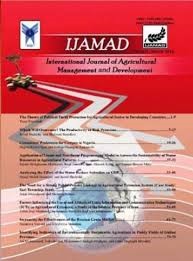Soil Texture Classes Mapping as a Way in Soil Sustainable Management
Subject Areas : Environmental policy and management
Keywords: Zoning, Decision tree, Geology, Digital mapping,
Abstract :
The spatial distribution map of soil classes is highly helpful in planning sustainable agriculture. One of the most important soil characteristic is soil texture that the providing a map of that can help to find lands suitable and capable for various agriculture products. For growers, the soil texture classes map has a more importance than the map of the percentage of soil texture particles. The aim of the present study was to compare two models of Decision Tree (DT) and Artificial Neural Network (ANN) and their efficiency in forecasting soil texture class in a region of Bardeh, Chaharmahal and Bakhtiari province, Iran. In the present study, 96 soil profiles in an area of 6875 hectares were excavated, described and sampled from surface horizons and the location of the profiles was recorded using GPS. The percentages of Clay, Sand, and Silt were measured and the soil texture classes were determined. Results showed that the RMSE, Kappa Index, R square and overall accuracy, for estimating the soil texture class based on test data for the Neural Network model were 0.6, 0.09, 0.24, 0.59, and for decision tree model were 0.76, 0.75, 0.6, and 0.41, respectively. According to the results, the decision tree model was the better predictor in providing soil texture classes map. The results showed that the digital mapping of soil texture class could be evaluated as a soil resource assessment.

